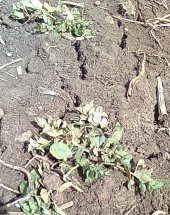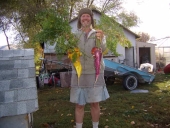




 3
3




 1
1








 2
2




 2
2




 3
3




Chadwick Holmes wrote: I was thinking on the lines of white clover etc
 2
2




 1
1








Davis Bonk wrote:So overseed legumes so they choke out the weeds and themselves but can't compete with the garlic. I think I'm gonna give this a shot. Its still gonna require cultivation and or mulch around the plants.

 4
4




"Never doubt that a small group of thoughtful, committed citizens can change the world; indeed, it's the only thing that ever has."-Margaret Mead "The only thing worse than being blind, is having sight but no vision."-Helen Keller
 4
4




Iterations are fine, we don't have to be perfect
My 2nd Location:Florida HardinessZone:10 AHS:10 GDD:8500 Rainfall:2in/mth winter, 8in/mth summer, Soil:Sand pH8 Flat

 3
3






 1
1




 3
3




 5
5




 2
2




 1
1














 3
3




This would depend on your spacing.Would winter rye take over garlic?
"Never doubt that a small group of thoughtful, committed citizens can change the world; indeed, it's the only thing that ever has."-Margaret Mead "The only thing worse than being blind, is having sight but no vision."-Helen Keller















"Never doubt that a small group of thoughtful, committed citizens can change the world; indeed, it's the only thing that ever has."-Margaret Mead "The only thing worse than being blind, is having sight but no vision."-Helen Keller










 2
2




"Never doubt that a small group of thoughtful, committed citizens can change the world; indeed, it's the only thing that ever has."-Margaret Mead "The only thing worse than being blind, is having sight but no vision."-Helen Keller
 1
1




 1
1




Roberto pokachinni wrote:I've always wanted to try planting garlic in permanent strawberry beds. I also like the idea of planting melon (in my area, squash/pumpkin) type vines to the side and allowing the vines into the crop. This could work well with garlic, and with strawberries I think, from my experience. By the time the vines got really going, the strawberries would be done, and the garlic might be tall enough and strong enough to handle it. The only problem is a heavy squash being in the garlic patch. hmmm.

 4
4




 4
4




![Filename: Onion-intercrop.gif
Description: [Thumbnail for Onion-intercrop.gif]](/t/54205/a/44420/Onion-intercrop.gif)




 2
2




 2
2




Josh Heyneke wrote:Has anyone managed to experiment with clover as a living mulch under their garlic since this thread was started?
I planted a garlic patch up in November 2017. The garlic has gotten off to a good start on weed free raised beds. Planning on sowing persian clover and yellow trefoil underneath the garlic in spring.
I'd be interested to know if anyone has any more results / info to share.
 3
3




My farm and garden: https://trello.com/b/GqBLwdNh
My tacky designs on merch: https://www.redbubble.com/people/oldmobie/shop?asc=u&ref=account-nav-dropdown
 2
2








 1
1




"When the whole world is running towards a cliff, he who is running in the opposite direction appears to have lost his mind." C.S. Lewis
Visit https://themaineingredient.com for organic, premium dried culinary herbs that are grown, processed, and packaged in the USA.








when you're going through hell, keep going!


 1
1




Hans Albert Quistorff, LMT projects on permies Hans Massage Qberry Farm magnet therapy gmail hquistorff




 1
1




Nick & Jane
You are most welcome to visit our blog at ALEKOVO.COM.

|
Maybe he went home and went to bed. And took this tiny ad with him:
The new purple deck of permaculture playing cards
https://www.kickstarter.com/projects/paulwheaton/garden-cards
|








